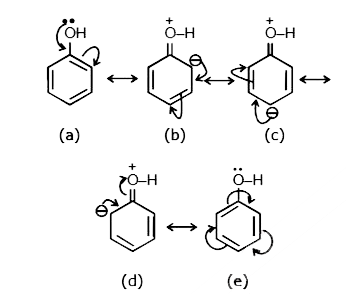Let A=(a,b) and B=(c,d) where c>a>0 and d>b>0. Then, point C on the X-axis such that AC+BC is the minimum, is:
bc−adb−d
ac+bdb+d
ac−bdb−a
ad+bcb+d
The correct Answer is:D
To find the point C on the X-axis such that the sum of distances AC+BC is minimized, we can follow these steps:
Step 1: Understand the Geometry
We have two points A=(a,b) and B=(c,d) where c>a>0 and d>b>0. The point C lies on the X-axis, which means its coordinates can be represented as C=(x,0).
Step 2: Write the Distance Formulas
The distances from A to C and from B to C can be expressed as:
- Distance AC=√(x−a)2+(0−b)2=√(x−a)2+b2
- Distance BC=√(x−c)2+(0−d)2=√(x−c)2+d2
Step 3: Set Up the Objective Function
We want to minimize the total distance:
D=AC+BC=√(x−a)2+b2+√(x−c)2+d2
Step 4: Use the Reflection Method
To minimize D, we can reflect point B across the X-axis to get point B′=(c,−d). The minimum distance AC+BC is equivalent to the straight line distance AB′.
Step 5: Find the Equation of the Line
The coordinates of points A and B′ are A=(a,b) and B′=(c,−d). The slope of line AB′ is given by:
slope=−d−bc−a
The equation of the line can be written in point-slope form:
y−b=−d−bc−a(x−a)
Step 6: Find the Intersection with the X-axis
To find the point C on the X-axis, set y=0 in the line equation:
0−b=−d−bc−a(x−a)
Solving for x:
−b(c−a)=(−d−b)(x−a)
−b(c−a)=−dx+da−bx+ba
(b+d)x=da+b(c−a)
x=da+b(c−a)b+d
Step 7: Conclusion
Thus, the coordinates of point C that minimizes AC+BC are:
C=(da+b(c−a)b+d,0)
We have two points A=(a,b) and B=(c,d) where c>a>0 and d>b>0. The point C lies on the X-axis, which means its coordinates can be represented as C=(x,0).
The distances from A to C and from B to C can be expressed as:
- Distance AC=√(x−a)2+(0−b)2=√(x−a)2+b2
- Distance BC=√(x−c)2+(0−d)2=√(x−c)2+d2
We want to minimize the total distance:
D=AC+BC=√(x−a)2+b2+√(x−c)2+d2
To minimize D, we can reflect point B across the X-axis to get point B′=(c,−d). The minimum distance AC+BC is equivalent to the straight line distance AB′.
The coordinates of points A and B′ are A=(a,b) and B′=(c,−d). The slope of line AB′ is given by:
slope=−d−bc−a
The equation of the line can be written in point-slope form:
y−b=−d−bc−a(x−a)
To find the point C on the X-axis, set y=0 in the line equation:
0−b=−d−bc−a(x−a)
Solving for x:
−b(c−a)=(−d−b)(x−a)
−b(c−a)=−dx+da−bx+ba
(b+d)x=da+b(c−a)
x=da+b(c−a)b+d
Thus, the coordinates of point C that minimizes AC+BC are:
C=(da+b(c−a)b+d,0)
Similar Questions
Knowledge Check
- Question 1 - Select One or More
If a,b,c are in H.P, where a>c>0, then :
Ab>a+c2B1a−b−1b−c<0Cac>b2Dbc(1−a),ac(1−b),ab(1−c) are in A.P. - Question 2 - Select One
If a +b > c+d and b + c> a+d, then it is definite that
A1. c>dB2. b>dC3. a>dD4. b>c - Question 3 - Select One
Let a>0,b>0 then both roots of the equation ax2+bx+c=0
Aare real and negativeBhave negative real partsChave positive real partsDnone of these
Let a>0,b>0andc<0. Then, both the roots of the equation ax2+bx+c=0
View SolutionIf A>0andC>0, then e(AX+B,CY+D)=
View SolutionLet A = (abcd) where a,b,c,d ∈ R .
If |a|,|b|,|c|,|d|≤ where k>0 thenView SolutionThe function f(x)=logcx, where c>0,x>0 is
View SolutionIf a>0,b>0,c>0, then both the roots of the equation
ax2+bx+c=0View Solution


